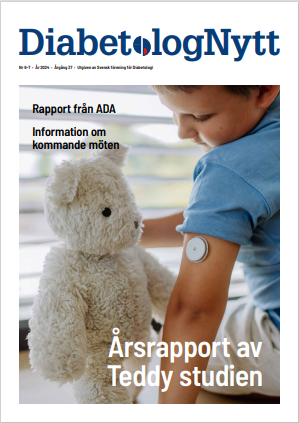På ADAs sista session, Late Breaking Abstracts, hade av en handfull abstracts utvalts som speciellt värdefulla Marcus Lind, MD, Ph D, NÄL, gjorde en fin lecture i den stora konferenslokalen.
Late Breaking Abstracts
Abstract Number: 146-LB
Time-dependent Relationship between HbA1c and Subsequent Death or Myocardial Infarction may explain the UKPDS Legacy Effect
Authors: MARCUS LIND, ANDERS ODÉN, RUTH L. COLEMAN, OLLE NERMAN, RURY R. HOLMAN, Gothenburg, Sweden, Chalmers University of Technology, University of G, Sweden, Oxford, United Kingdom
Abstract
Sustained reduction in the risk of diabetic complications was seen during the 10-year UKPDS post-trial monitoring period despite the previously randomised conventional and intensive treatment groups becoming identical with respect to median HbA1c values.
We have examined whether this ‘legacy effect’ can be explained by prolonged benefits of earlier HbA1c levels.
Continuous hazard functions for death and MI from diagnosis of type 2 diabetes in relation to age, sex, HbA1c and original treatment assignment (intensive/conventional) were estimated in 3849 UKPDS individuals.
These were then evaluated for different HbA1c levels during a preceding time interval to determine the degree to which they might explain the death and MI legacy effects. The hazard ratio for MI and mortality by each percentage unit lower HbA1c decreased with time being 0.81 and 0.72 for MI, and 0.84 and 0.75 for death at 10 and 20 years respectively.
A fitted model predicted that the relative reduction in the probability of death for a 60 year old man (woman) with diabetes diagnosed at age 50 for the age interval 60-65 years, for a HbA1c lowered from 8% to 7% since diagnosis, was 17.9% (18.3%).
Applying the same HbA1c reduction but from age 60 resulted in only a 3.0% (3.0%) risk reduction.
Results for MI were 19.5% (20.3) and 6.9% (7.2%) respectively.
The corresponding reduction over 60-70 years of age for the probability of death in men/women when lowering HbA1c from 8% to 7% from diagnosis onward were 18.6% (19.9%) and if lowering HbA1c first at 60 years it was 6.6% (7.2%).
For MI the corresponding reductions were 19.8% (20.3%) and 10.5% (11.6%) respectively. Major effects of improved glycaemic control are seen some 5-10 years later.
The long-term impact of achieved HbA1c levels explain to a large extent the sustained reductions in risk of death and MI seen in the UKPDS post-trial monitoring period. Early intensive glycaemic control is essential to obtain maximum benefit.
Nyhetsinfo
www red DiabetologNytt





